Featured Articles
The Controversy Surrounding Hopkins-Dawson…HAUSER
There are times when it seems as though Bernard Hopkins views the past twenty years in boxing as The Bernard Hopkins Story, with all of the promoters, television executives, and other fighters playing bit roles in the drama of his life.
Patrick Kehoe has referenced Bernard’s “idealistic glorification of himself as the American Dream” and noted “time itself seems to collapse into the black hole of his insatiable yearning for self-definition.”
Hopkins told Tom Gerbasi, “I wanted to be the Bill Russell of my time. I wanted to be the Muhammad Ali, the Jim Brown, the Satchel Paige. I wanted to be a guy known in history.”
“Hopkins,” Gerbasi wrote afterward, “is an idiot, but he’s a smart idiot.”
He’s also a superbly-talented fighter, who has built a hall-of-fame career on a will of iron, extraordinary conditioning, and remarkable technical skills. Bernard doesn’t get hit solidly often. When he does, he’s protected by one of the great chins in boxing.
But if one discounts Jean Pascal as a quality opponent (“Pascal is an ordinary fighter, who’s lucky he lives in Canada,” matchmaker Russell Peltz says), the Hopkins resume has been thin over the past three years. He has beaten Pascal, Enrique Ornelas, and Roy Jones Jr.
Thus, it has been suggested that two things distinguish Bernard from other fighters: (1) his remarkable performance at an advanced age; and (2) he’s one of the few quality fighters in boxing who can’t knock Jones out.
The October 15th match-up between Hopkins and Chad Dawson was marketed as the next building block in the Hopkins legend. Bernard thrives against fighters who are mentally weak. At the August 9th kick-off press conference in New York, he declared, “In boxing, either you fight or you quit. What happens in the ring when things don’t go [Dawson’s] way? Any adversity, he bails out. I just have to give him some problems. We know what will happen. I already diagnosed him.”
At the close of the press conference, when the fighters faced off for the ritual staredown, Bernard stood with his hands at his side. Chad’s hands were clasped behind his backside.
Ticket sales for the fight were poor. Steve Kim reported that the Staples Center was cold-calling and sending emails to past customers, offering significant discounts. Two days before the fight, Gary Shaw (Dawson’s promoter) tweeted, “1st 50 people to email me: gary@garyshawproductions.com, wish Dawson good luck, I’ll leave 2 tix @ will call to fight. Must submit full name.”
Then the hour of reckoning arrived.
To say that round one of Hopkins-Dawson was “slow” overstates the drama. In round two, Chad picked up the pace, with Bernard trying to blunt the action. One minute 45 seconds into the stanza, HBO analyst Max Kellerman opined, “So far, the fight is a stinker.”
Then, with twenty-two seconds left in round two, Hopkins missed with a right hand, leveraged himself onto Dawson’s upper back, and appeared to deliberately push his right forearm down on the back of Chad’s neck. At the same time, he wrapped his left arm around Dawson’s torso to steady himself and apply additional pressure to Chad’s neck.
“Bernard was on his back and was more physical than he should have been,” HBO commentator Emanuel Steward noted later.
Consider for a moment what it feels like to have Bernard Hopkins climb onto your back and jam his forearm into your neck. The intelligent response is to throw him off as fast as possible, which is what Dawson did. Chad rose up and, using his shoulder, shoved Bernard up and off. At one point, Dawson’s left arm was around Hopkins’s right thigh. But Chad let it go before shoving Bernard off.
Hopkins fell backward to the canvas, landed hard on his left elbow and shoulder, and lay there in pain. In response to questioning from a ring physician and referee Pat Russell, he said that he couldn’t continue unless it was “with one hand.”
Russell then ruled that Bernard’s trip to the canvas was not caused by a foul and declared Dawson the winner by knockout at 2 minutes and 48 seconds of the second round.
“I do not have a foul,” Russell said. “I’m not calling that a foul. He was pushing down on top of [Dawson], and [Dawson] lifted him off. It was not a foul. It’s a TKO.”
“He ran from me for three years,” Dawson declared in a post-fight interview. “I knew he didn’t want the fight. He keeps talking about Philly and about being a gangster. He’s no gangster. Gangsters don’t quit. He’s weak physically and mentally. He has no power. I was going to get on him, and he knew it.”
If the decision stands, it will be the first “KO by” on Bernard’s record.
As for what comes next; there are two threshold issues. The first is whether Hopkins was really injured. The general consensus is that he has employed his thespian talents in the past to feign injury and buy time when he found himself in trouble (for example, against Joe Calzaghe). Dawson, for his part, said flatly after the fight, “He was faking.”
According to a spokesperson for the Hopkins camp, Bernard was taken to California Hospital Medical Center after the fight and diagnosed as having a dislocation of the joint that connects the collarbone to the shoulder blade. Presumably, he will waive the confidentiality that attaches to his medical records and allow the examining physician to speak freely with the California State Athletic Commission and the media. That will lay one issue to rest.
The thornier question is whether referee Pat Russell acted correctly.
Section 33 of the Referee Rules and Guidelines adopted by the Association of Boxing Commissions states, “The referee must consult with the ringside physician in all accidental injury cases. The referee, in conjunction with the ringside physician, will determine the length of time needed to evaluate the affected boxer and his or her suitability to continue. If the injured boxer is not adversely affected and their chance of winning has not been seriously jeopardized because of the injury, the bout may be allowed to continue.”
Here, Hopkins told Russell and the ring physician that he couldn’t continue unless it was “with one hand.” Thus, the fight was properly stopped.
After the stoppage, Max Kellerman muddied the waters when he told the HBO-PPV audience, “It should be something like a no decision or no contest because clearly it was an injury [caused] by a non-boxing move. He was thrown to the ground even if he was on top of Chad Dawson.”
But Dawson only did what he had to do to keep Hopkins (who was fouling) from damaging the back of his neck.
Before the fight, Hopkins proclaimed, “Chad Dawson said I’m dirty. All fights are dirty to me. Some are dirtier than others. The referee is in the ring that will oversee anything that he does or I do. When you’re in the fight, things happen he might say is an accident. Things happen I might say is an accident. It’s up to the referee. I don’t have to be dirty to win a fight, but I’m in a fight.”
Whatsoever a man soweth, that shall he also reap.
It has been argued that a title shouldn’t change hands on a ruling of this nature. But it would be wrong to have rules relating to the conduct of a fight that favor a champion over the challenger. Yes, it’s hard on Hopkins for him to lose his title in this manner. But it would be just as unfair to allow him to keep his title and consign Dawson to the wilderness of boxing because of an unfortunate situation that Bernard himself created.
Hopkins will file an appeal of Russell’s decision with the California State Athletic Commission, where his promoter (Golden Boy) has considerable influence. If the outcome is changed to “no contest,” he will retain his WBC and Ring magazine titles. Either way, the WBC can be expected to order a rematch “for the good of boxing” and the lucrative sanctioning fee involved. It will be interesting to see how The Ring (which is owned by Golden Boy) handles the matter.
In sum; there can be no completely satisfactory resolution of the situation that arose in Hopkins-Dawson. But Pat Russell made a reasonable decision. And the view from here is that it was the right one.
Bernard Hopkins was primarily responsible for the injury that he suffered. Is a rematch appropriate? Yes; but with Chad Dawson as the defending champion.
Thomas Hauser can be reached by email at thauser@rcn.com. His most recent book (Winks and Daggers: An Inside Look at Another Year in Boxing) was published recently by the University of Arkansas Press.
-

 Featured Articles3 weeks ago
Featured Articles3 weeks agoThomas Hauser’s Literary Notes: Johnny Greaves Tells a Sad Tale
-
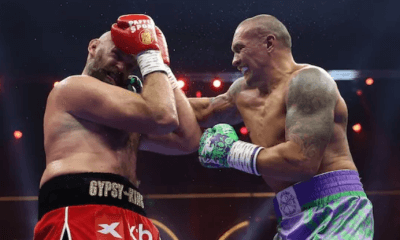
 Featured Articles2 weeks ago
Featured Articles2 weeks agoBoxing Notes and Nuggets from Thomas Hauser
-
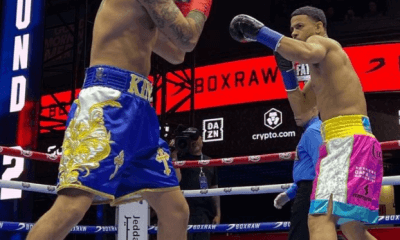
 Featured Articles4 weeks ago
Featured Articles4 weeks agoRolly Romero Upsets Ryan Garcia in the Finale of a Times Square Tripleheader
-
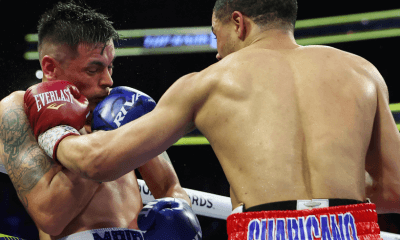
 Featured Articles4 weeks ago
Featured Articles4 weeks agoUndercard Results and Recaps from the Inoue-Cardenas Show in Las Vegas
-
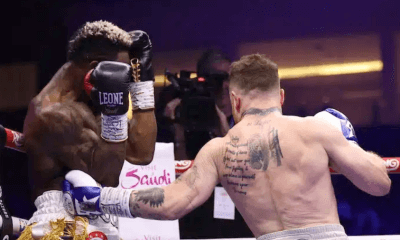
 Featured Articles4 weeks ago
Featured Articles4 weeks agoCanelo Alvarez Upends Dancing Machine William Scull in Saudi Arabia
-
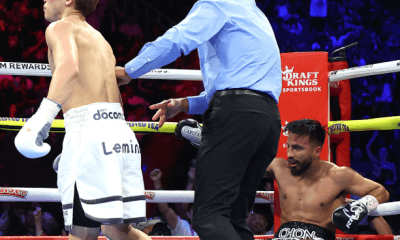
 Featured Articles4 weeks ago
Featured Articles4 weeks agoBombs Away in Las Vegas where Inoue and Espinoza Scored Smashing Triumphs
-
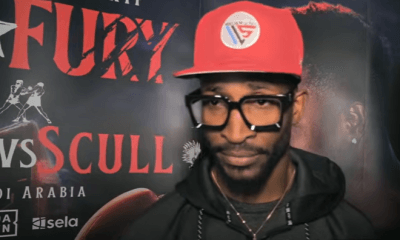
 Featured Articles4 weeks ago
Featured Articles4 weeks agoArne’s Almanac: The Good, the Bad, and the (Mostly) Ugly; a Weekend Boxing Recap and More
-
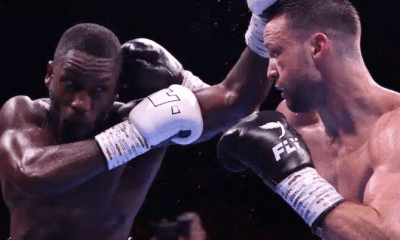
 Featured Articles1 week ago
Featured Articles1 week agoEkow Essuman Upsets Josh Taylor and Moses Itauma Blasts Out Mike Balogun in Glasgow



















